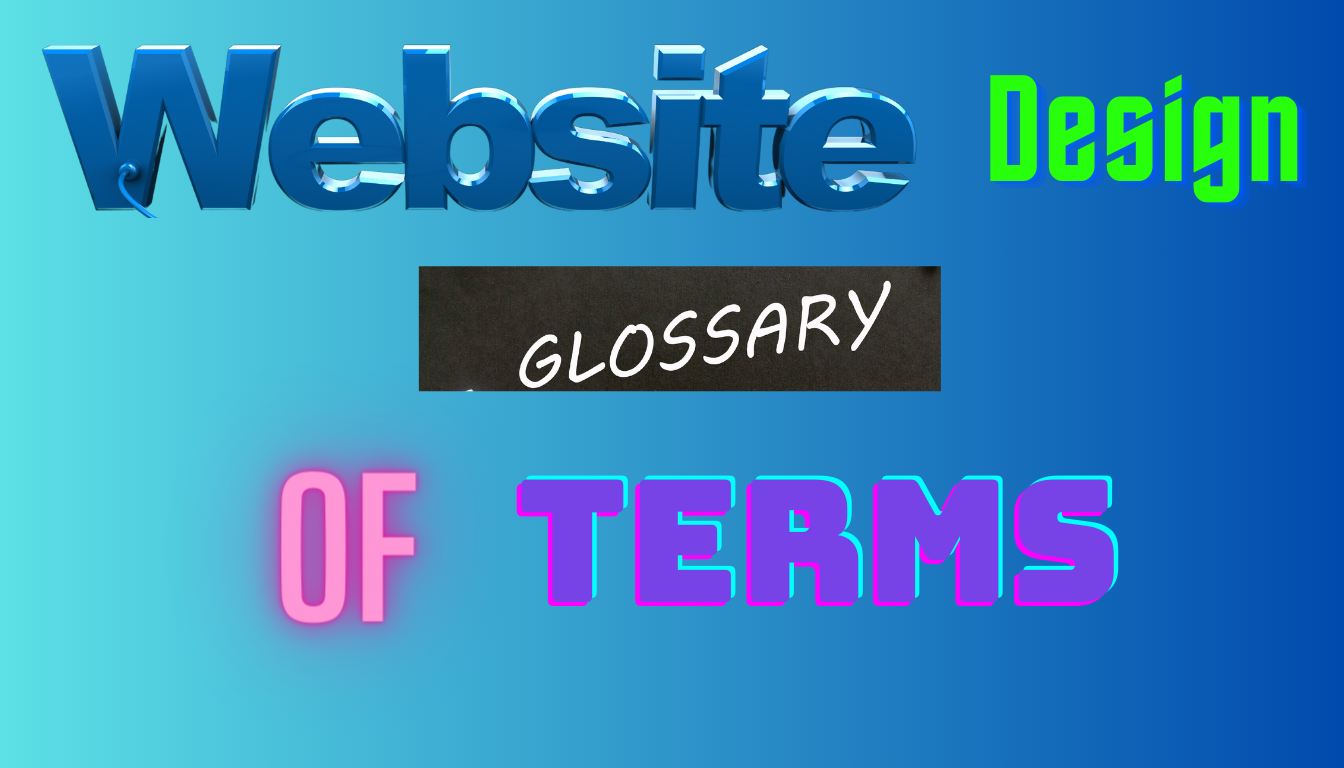Introduction
When venturing into the world of website creation, the plethora of terms and jargon encountered can be overwhelming. To effectively utilize website builders and design tools, a solid grasp of the relevant terminology is crucial. This introduction aims to demystify the jargon, providing you with a clear understanding of the key terms associated with website builders. Our focus keyword here is “Website Builder Glossary of Terms”, and we will highlight some of the fundamental terms you’re likely to encounter.
Table of Contents
Why a Glossary is Essential
A glossary serves as a navigational tool through the technical landscape of website building. It not only enhances your comprehension but also empowers you to make informed decisions about the design and functionality of your website. Let’s decode some basic terms that form the bedrock of website building knowledge.
Core Terms in the Website Builder Glossary
- Domain: The unique address where your website can be found on the internet.
- Hosting: A service that allows your website to be accessible on the internet by storing your site files on a server.
- CMS (Content Management System): A platform that lets you create, manage, and modify content on a website without needing specialized technical knowledge.
- SEO (Search Engine Optimization): The practice of increasing the quantity and quality of traffic to your website through organic search engine results.
- Plugin/Add-on: A software component that adds specific features to an existing computer program, like a website builder, allowing for more functionality.
Generic Terms for Website Builder
| Term | Definition |
|---|---|
| Domain | The unique web address where your website can be found. |
| Hosting | A service that stores your website files on a server, making it accessible online. |
| CMS (Content Management System) | A platform enabling you to create, manage, and modify content on your website without needing to code. |
| SEO (Search Engine Optimization) | Practices aimed at increasing the quality and quantity of traffic to your site through organic search engine results. |
| Plugin/Add-on | Software that adds specific features or functionalities to the website builder. |
| Template/Theme | Pre-designed webpage layouts that can be customized to build your website. |
| Responsive Design | A design approach that ensures your website looks good on all devices, including desktops, tablets, and phones. |
| Drag-and-Drop Editor | A user-friendly interface that allows you to build web pages by simply dragging elements onto your page. |
| SSL Certificate | A digital certificate that provides authentication for a website and enables an encrypted connection. |
| Analytics | Tools that track and report website traffic and user behavior, helping you understand your audience better. |
| E-commerce Platform | A system that allows you to sell products or services online. |
| Widget | Small applications that perform specific functions on a webpage, like displaying weather updates or social media feeds. |
| Landing Page | A standalone web page created specifically for a marketing or advertising campaign. |
| Navigation Bar | A set of links typically displayed at the top of a website, used to navigate between pages. |
| Breadcrumb Navigation | A type of web navigation that shows users their current location on a site and how they got there. |
| Alt Text (Alternative Text) | A description of an image on your website, which helps with SEO and web accessibility. |
| CTA (Call to Action) | A prompt on a website that tells the user to take some specified action, such as “Buy Now” or “Subscribe”. |
| Backlink | A link from another website to yours, which can improve your site’s SEO. |
| Cache | Stored web page resources that help in loading pages faster during subsequent visits. |
| CDN (Content Delivery Network) | A network of servers that deliver cached web content from websites to users based on the geographic location of the user. |
Specific Terms for Website Builder
| Term | Definition |
|---|---|
| Meta Tags | Snippets of text that describe a page’s content; they don’t appear on the page itself but in the page’s code, helping search engines and social media websites understand what the page is about. |
| 404 Page | The error page displayed when a website visitor tries to access a page that doesn’t exist on the website. |
| 301 Redirect | A permanent redirect from one URL to another, used to reroute traffic and preserve search engine rankings. |
| Favicon | A small icon associated with a website, displayed in the address bar or tab of a browser next to the website’s name. |
| Header/Footer | Sections at the top and bottom of your website that typically contain key information like the navigation menu, contact information, and social media icons. |
| HTTPS (HyperText Transfer Protocol Secure) | The secure version of HTTP, showing that a website is encrypted and therefore more secure for user data. |
| Landing Page Builder | A specialized tool or feature within a website builder that allows users to create web pages specifically designed for marketing or advertising purposes. |
| Parallax Scrolling | A web design technique where the background content (i.e., an image) moves at a different speed than the foreground content while scrolling. |
| Payment Gateway | A merchant service that processes credit card payments for e-commerce sites and traditional brick-and-mortar stores. |
| Sitemap | A file where you provide information about the pages, videos, and other files on your site, and the relationships between them. |
| UI (User Interface) | The space where interactions between humans and machines occur, particularly involving web pages, applications, and desktops. |
| UX (User Experience) | The overall experience a user has with a company’s products or services, in terms of how pleasing and easy they are to use. |
| Web Accessibility | The practice of making your website usable by as many people as possible, including those with impairments or disabilities. |
| White Space | The area of a page left unmarked; the space between graphics, margins, gutters, space between columns, space between lines of type, or visuals. |
| Wireframe | A basic visual guide used in interface design to suggest the layout of fundamental elements in the interface. |
| API (Application Programming Interface) | A set of rules that allows different software entities to communicate with each other. |
| Bandwidth | The maximum rate of data transfer across a given path, which affects how quickly your website can load for visitors. |
| Content Delivery | The process of delivering web content to users, often optimized to ensure fast loading times and a seamless user experience. |
| Domain Name System (DNS) | The system by which internet domain names and addresses are tracked and regulated. |
| Firewall | A network security system that monitors and controls incoming and outgoing network traffic based on predetermined security rules. |
| Load Time | The amount of time it takes for a webpage to be completely loaded within a browser. |
| Mobile Optimization | The process of adjusting your website content to ensure that visitors who access the site from mobile devices have an experience optimized for the device. |
| Page Builder | A plugin or component of a website builder that offers a drag-and-drop interface to design and edit web pages. |
| Responsive Theme | A website theme designed to automatically adjust and fit to any screen size, ensuring a consistent user experience across devices. |
| SSL/TLS (Secure Sockets Layer/Transport Layer Security) | Protocols for establishing authenticated and encrypted links between networked computers. |
| Thumbnail | A small image that represents a larger one, used to help users select, recognize, or verify content. |
| Traffic | The flow of data or visitors to a website, an essential metric for website success. |
| User Engagement | The degree to which a visitor to your website interacts with the content, often used as a measure of success for the site. |
| Version Control | A system that records changes to a file or set of files over time so that you can recall specific versions later. |
| Widget Area | Areas in a website’s design designated for widgets (small blocks of content or features) to be added. |
Conclusion and Final Thoughts
Navigating the digital landscape of website creation can initially seem like a daunting task, filled with technical jargon and industry-specific terms. However, with the comprehensive glossary of terms for website builders we’ve explored, you’re now equipped with the knowledge to confidently approach the task of building your own website. Understanding these terms not only demystifies the process but also empowers you to make informed decisions about the design, functionality, and overall strategy of your online presence.
The journey from a novice to a proficient website creator is filled with learning and exploration. Remember, the glossary provided is not just a list of definitions; it’s a toolkit that enhances your ability to communicate your vision, troubleshoot issues, and leverage the full potential of website builders and design tools. As you grow more familiar with these terms, you’ll find that your conversations with developers, designers, and even software support teams become more productive and insightful.
Embracing Continuous Learning
The digital world is ever-evolving, with new technologies, trends, and best practices emerging regularly. This dynamic nature means that the glossary of terms for website builders will also continue to expand. Stay curious and open to learning; subscribing to industry blogs, participating in forums, and attending webinars are excellent ways to keep your knowledge up-to-date.
Leveraging Your Newfound Knowledge
Armed with a solid understanding of website builder terminology, you’re now better positioned to explore the wide array of features and tools available. Whether you’re optimizing your site for search engines, enhancing user experience, or securing your online transactions, the terms outlined in this glossary serve as the foundation for these endeavors.



